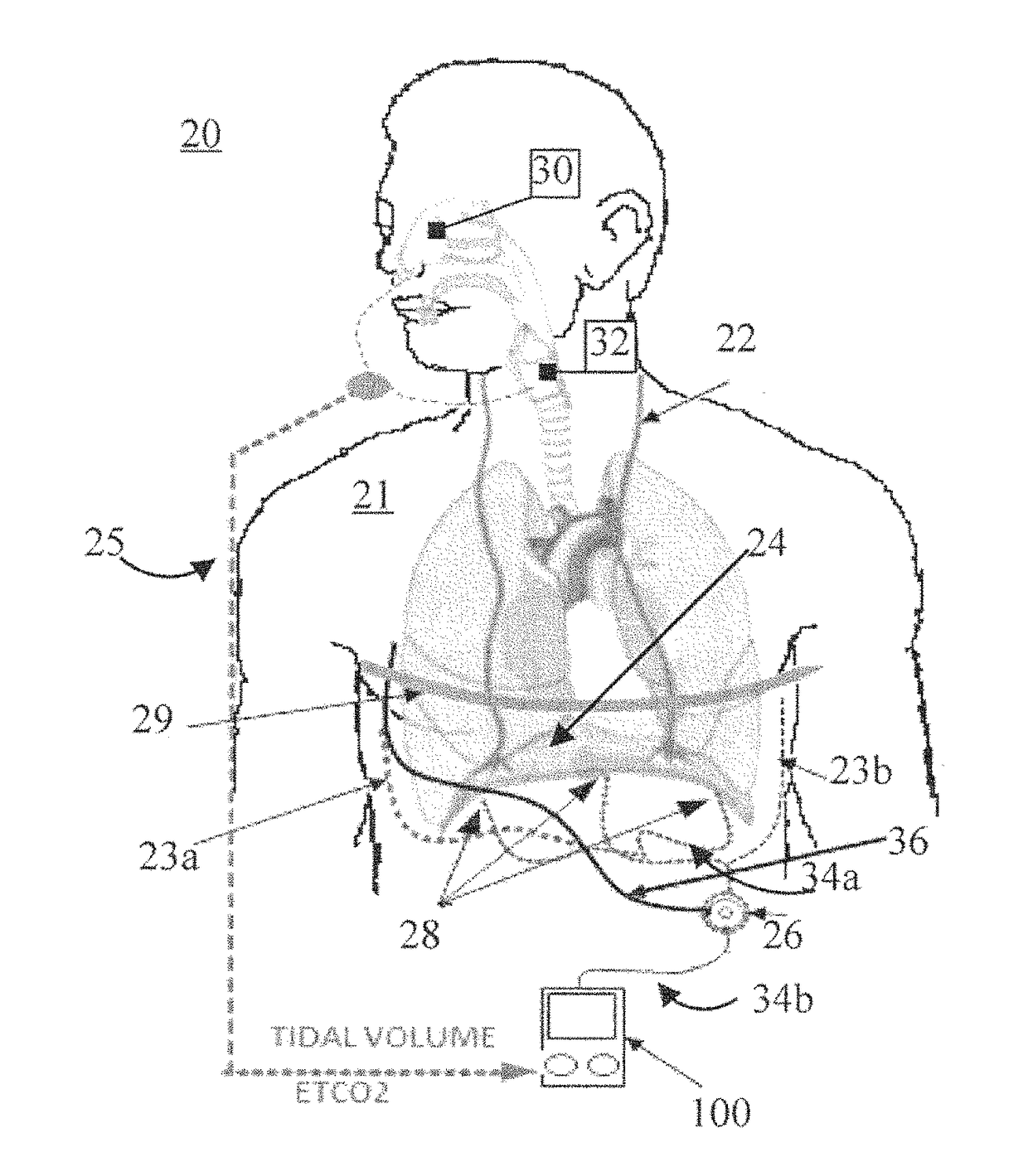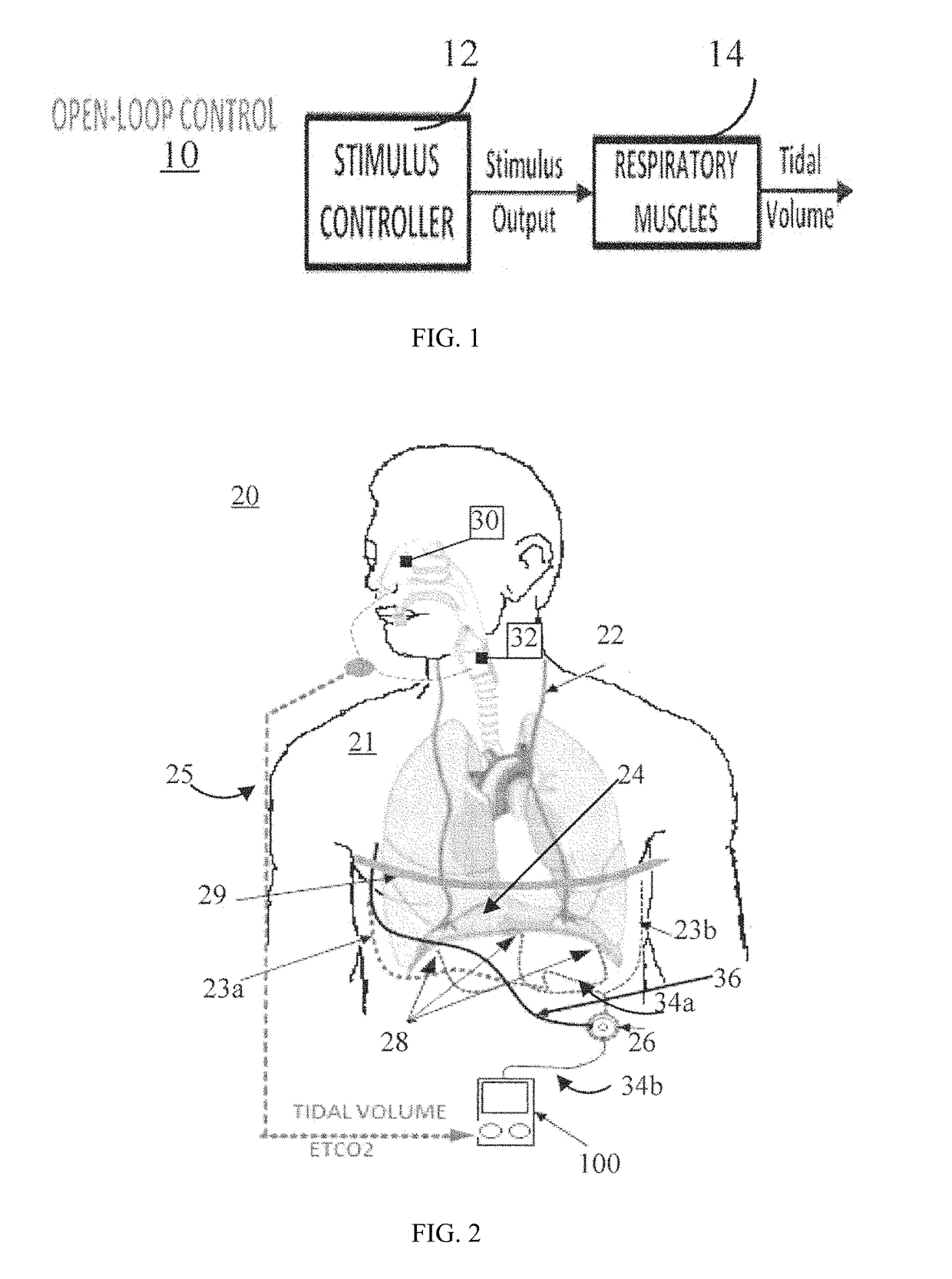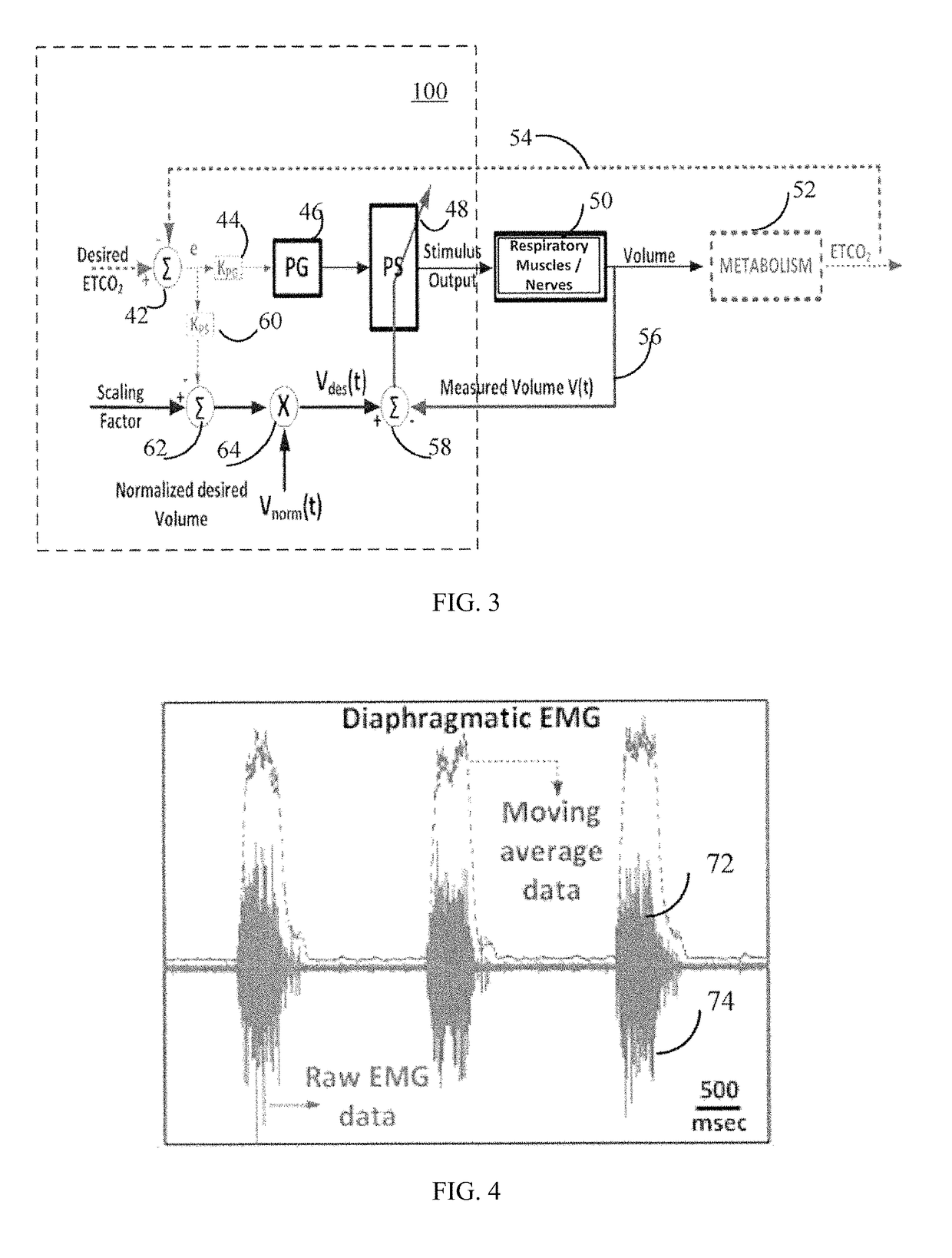System and method for neuromorphic controlled adaptive pacing of respiratory muscles and nerves
a respiratory muscle technology, applied in the field of system and method for neuromorphic controlled adaptive pacing of respiratory muscles and nerves, can solve the problems of muscle fatigue, reduced breathing capacity, and reduced function of primary breathing muscles, so as to prolong the period of time off the mechanical ventilator, the effect of slowing down muscle fatigu
- Summary
- Abstract
- Description
- Claims
- Application Information
AI Technical Summary
Benefits of technology
Problems solved by technology
Method used
Image
Examples
Embodiment Construction
[0026]Adaptive systems and methods for automatically determining and continuously updating stimulation parameters for adjusting ventilation to accommodate a patient's specific physiology, metabolic needs, and muscle state are disclosed herein. One example of an adaptive system may comprise at least one electrode implanted in at least one muscle or nerve of the user and at least one sensor for detecting at least one physiological parameter of the user. The adaptive system may further comprise a controller that generates a stimulus control signal for adjusting the breathing pattern using at least one detected physiological parameter; wherein, the controller sends the stimulus control signal to the at least one electrode for controlling the movement of the at least one muscle or nerve.
[0027]The controller may comprise a pattern generator coupled to a pattern shaper, where the pattern generator comprises a biomimetic design having a neural network mimicking the simplified connectivity p...
PUM
 Login to View More
Login to View More Abstract
Description
Claims
Application Information
 Login to View More
Login to View More - R&D
- Intellectual Property
- Life Sciences
- Materials
- Tech Scout
- Unparalleled Data Quality
- Higher Quality Content
- 60% Fewer Hallucinations
Browse by: Latest US Patents, China's latest patents, Technical Efficacy Thesaurus, Application Domain, Technology Topic, Popular Technical Reports.
© 2025 PatSnap. All rights reserved.Legal|Privacy policy|Modern Slavery Act Transparency Statement|Sitemap|About US| Contact US: help@patsnap.com



